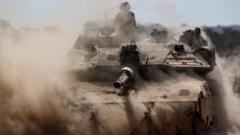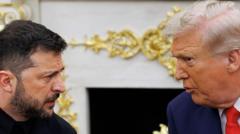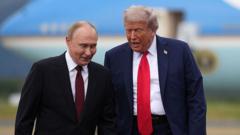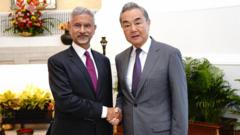The Donetsk region has a critical role in Ukraine's defense strategy due to its geographical advantages, existing fortifications, and potential to prevent further Russian incursions. While Russia aims to tighten its grip on the area, Ukraine remains committed to maintaining control to secure its sovereignty and military positioning.
The Strategic Importance of Donetsk in Ukraine's Defense Strategy
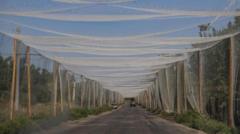
The Strategic Importance of Donetsk in Ukraine's Defense Strategy
An analysis of why the Donetsk region holds significant military value for Ukraine amidst ongoing conflict with Russia.
The Donetsk region of Ukraine continues to be a focal point in the ongoing conflict with Russia, especially as recent discussions surfaced about potentially freezing the war along the current front lines. Russian President Vladimir Putin's reported desire for the complete surrender of the Donetsk region poses a serious threat to Ukraine, which still controls approximately 6,600 square kilometers of this strategically significant territory.
Following more than a decade of armed conflict, Russia currently holds around 70% of Donetsk, including its regional capital. Retaining control of western Donetsk is vital for Ukraine, as ceding this land would not only result in further territorial losses but also invite a humanitarian crisis marked by increased refugee flows.
Urban centers such as Kramatorsk, Slovyansk, and Kostyantynivka, which are part of Ukraine's major industrial region, are remnants of a once-thriving economy now devastated by war. Experts suggest that the extensive mining and destruction of infrastructure will severely obstruct any possibility of economic recovery for years to come. Dr. Marnie Howlett from the University of Oxford highlights that access to these resources may not return anytime soon due to the ongoing dangers posed by landmines and war remnants.
From a military standpoint, the area has been fortified with trenches, bunkers, and other defensive measures to establish a "fortress belt" through western Donetsk, as described by the Institute for the Study of War (ISW). This creates a formidable defense against Russian advances, but the terrain itself presents challenges for Ukrainian forces. Nick Reynolds from the Royal United Services Institute explains that while some areas like Chasiv Yar offer strategic defensive capabilities, the overall topography is not favorable for Ukraine.
Reports indicate that the ongoing conflict has seen some of the fiercest Russian offensives in western Donetsk, although alternative fronts may yield similar challenges for the Russian military. In the absence of a secure offensive path, analysts speculate that Russia's continued focus on this front could lead to prolonged engagements.
Should a peace settlement be reached, Ukraine might consider repositioning its defenses further westward—though the difficulties associated with the terrain would hinder rapid fortification efforts. The prospect of giving up control of western Donetsk remains highly contentious, with President Volodymyr Zelensky asserting that negotiations leading to any territorial concessions would be firmly rejected, as the region poses a potential launchpad for future Russian assaults.
As the situation in Donetsk unfolds, both military and humanitarian implications will remain critical in shaping the ongoing conflict and Ukraine's defensive strategy against its aggressive neighbor. The international community will undoubtedly be monitoring the developments as they pledge support for Ukraine's territorial integrity amidst these geopolitical tensions.

